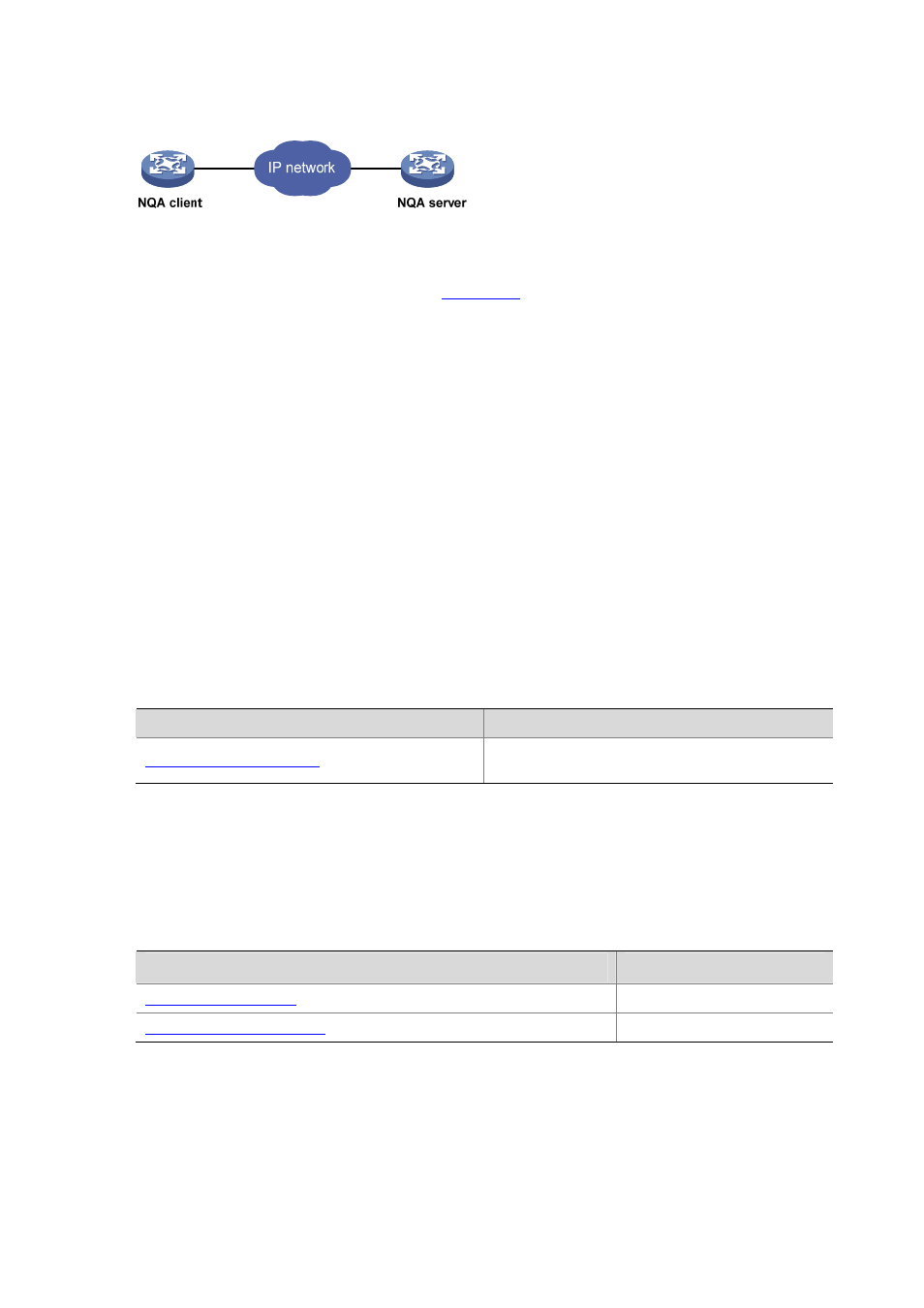Nqa probe operation procedure, Nqa configuration task list – H3C Technologies H3C WX6000 Series Access Controllers User Manual
Page 140

11-5
Figure 11-2 Relationship between the NQA client and NQA server
Not all test types require the NQA server. Only the TCP, UDP echo, UDP jitter, or voice test requires
both the NQA client and server, as shown in
.
You can create multiple TCP or UDP listening services on the NQA server. Each listens to a specific
destination address and port number. Make sure the destination IP address and port number for a
listening service on the server are the same as those configured for the test group on the NQA client.
Each listening service must be unique on the NQA server.
NQA probe operation procedure
An NQA probe operation involves the following steps:
1) The NQA client constructs probe packets for the specified type of NQA test, and sends them to the
peer device.
2) Upon receiving the probe packets, the peer sends back responses with timestamps.
3) The NQA client computes the network performance and service quality parameters, such as the
packet loss rate and round-trip time based on the received responses.
NQA Configuration Task List
Complete the following task to enable the NQA server:
Task
Remarks
Required for TCP, UDP echo, UDP jitter and voice
tests
To perform NQA tests successfully, make the following configurations on the NQA client:
1) Enable the NQA client.
2) Create a test group and configure test parameters. The test parameters may vary with test types.
3) Schedule the NQA test group.
Complete these tasks to configure NQA client:
Task
Remarks
Required
Required
